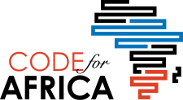iSeeChange: A Social Platform for Recording Climate Change
In an effort to bring local context to climate reporting in Western Colorado, Julia Kumari Drapkin started iSeeChange–an online weather and climate journal–in 2012 to help identify how the listeners of her local community radio station were being impacted by changes in the environment. Four years later, iSeeChange is a hybrid citizen-science, social media platform used by people around the world to document and share their experience of environmental change. Using geotagged photos coupled with data on the weather and atmospheric conditions, iSeeChange is working to create a collective climate journal for present and future generations.







